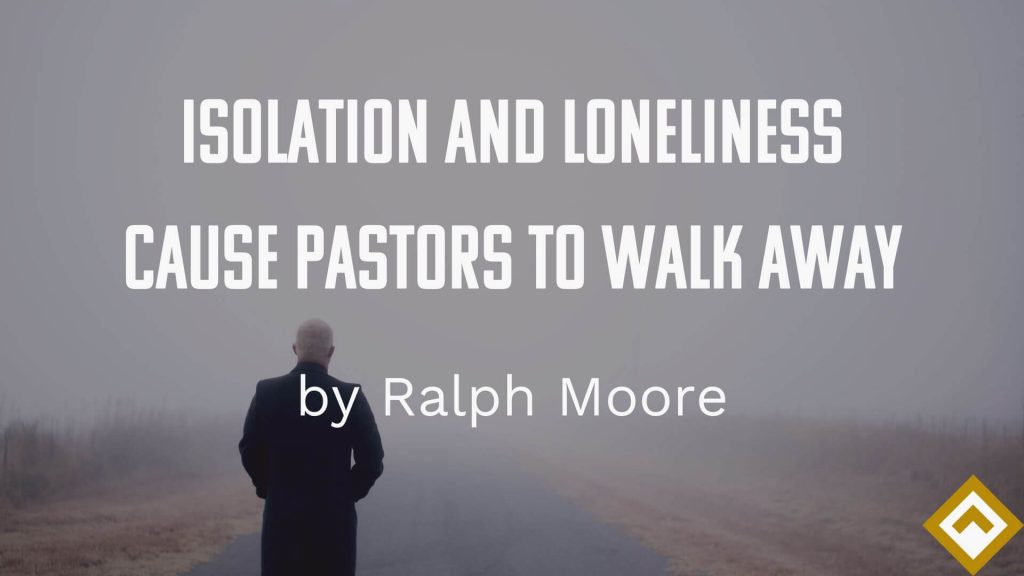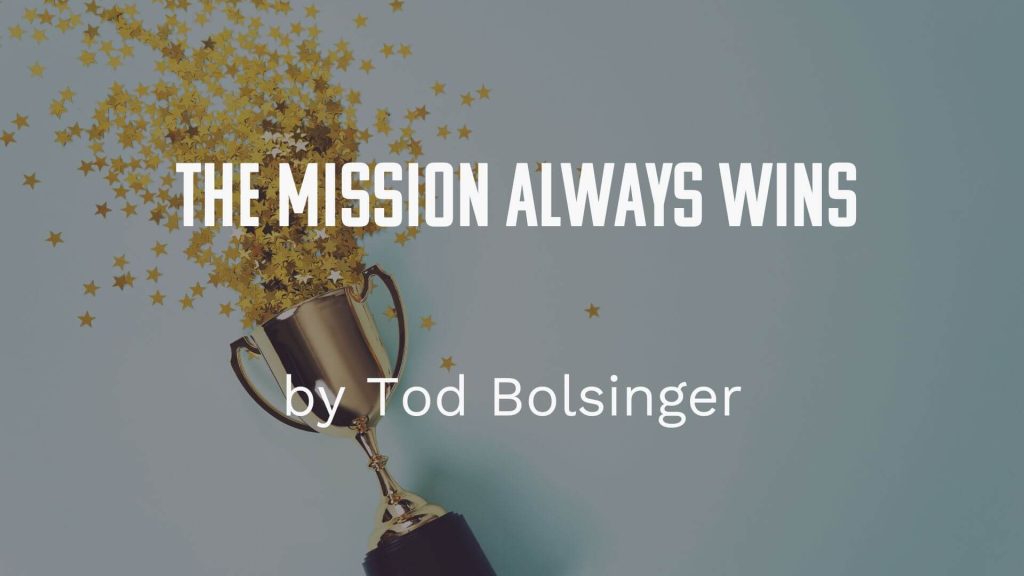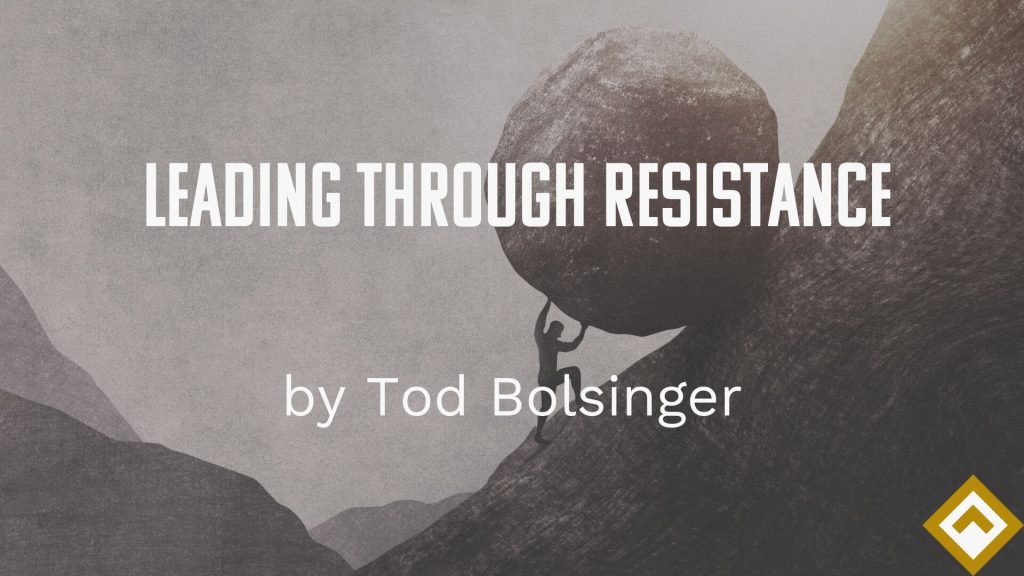Oasis have announced a total of 17 gigs in the UK and Ireland next year – and the cheapest ticket prices have now been confirmed.
Month: August 2024
Isolation and Loneliness Cause Pastors to Walk Away

I thought financial issues would be the first cause for pastors leaving the ministry.
But I was wrong! Isolation and loneliness account for the most significant number of pastors quitting their jobs—across all church sizes and flavors.
And we’re not alone with our feelings. According to his second letter to Timothy, the Apostle Paul was left in isolation. While decrying isolation from prison, he describes those who have left and then begs Timothy to come to him. And he warns Timothy about others deserting him, too—no one is immune.
In this context, Paul’s message to Timothy is perseverance and faithfulness despite abandonment or separation from others. He encourages Timothy to continue in his ministry and to come to him quickly, reflecting his need for companionship and his desire to pass on his final instructions and encouragement to his spiritual son.
So, how do we stand against feelings of isolation and loneliness? First, we identify and unpack the pain points and then look at antidotes.
Before identifying the sore spots, let’s admit that we are in a spiritual battle, and even reading this short missive is a form of spiritual warfare. The enemy would drive you to suicide if he could. He will undoubtedly wrap you in a cocoon of isolation, resulting in depression and anxiety, if nothing else. The weapons are as spiritual as the battle.
Simply remembering the miracles (or weird coincidences) that accompanied your call should quench a few fiery darts with a memory that God does have plans to prosper you and do you no harm. So, let’s examine the three most common combat zones.
Elevation and Isolation
Knowledge of biblical references and languages, a microphone strapped to the side of your face and standing on a physical platform all generate barriers between you and your congregation. Each makes it more challenging to create legitimate, caring friendships.
Worse yet, we have hundreds, sometimes thousands of acquaintances as pastors. However, these relationships are primarily shallow due to their sheer numbers. Again, those who would benefit you most may stand at a distance, not wanting to bother someone so busy.
One antidote to this is to tell on yourself when you curse at someone in traffic. Vulnerability breeds relationships. Tell the story, then drink coffee with whoever responds to it as you greet people after the meeting.
Estrangement In Families
I have a pastor friend in Japan who lost his son because my friend never really learned to speak the language, and young Japanese males resist learning English—enter the teenage years, and they had a problem.
But the kicker for most of us is simple busyness with the church. I know two men whose wives divorced them for what they deemed bigamy—they were married to the church, not to them.
Like detectives on a police force, we’re constantly running after problems. The solution here is a relatively rigid schedule. If someone is dying, that is a crisis; if they died, the crisis is past, and your schedule comes into play. If it can wait till working hours, let it!
Poorly Defined Buffer Zones
This one relates to managing your schedule but is different enough to mention here.
I was once frustrated by people looking over my shoulder at my calendar in the days of paper and ink. They’d see a blank spot and press for my time—even if it was my day off.
I began marking big red Xs across Tuesday evenings as that was the night dedicated to our small children for Fonzie and Lavern & Shirley on TV. When a lady showed up for counsel on a Tuesday, we invited her into the process. Later, when she badmouthed us for making her wait while we “watched silly TV shows with our kids,” I told her story in church. People began learning my need for private time (including coffee with tight friends), and I started marking more red Xs on my calendar.
Summarizing Our Thinking
We need to climb off the pedestal, even something as simple as occasionally preaching from the floor in front of the podium. We should protect our family time and our children—if someone called one of my kids a “PK,” they got an earful from me in front of the affected child. Finally, we can and should set severe buffer zones around our personal time and space. It is in those spaces that you can find the antidote to isolation leading to chronic loneliness and depression.
I believe the sometimes misquoted prophecy in Jeremiah 29—God has plans for us and means no harm. The spiritual warfare passage in Ephesians 6 begins with a warning in chapter 5 to submit to one another in love, then moves on to family issues. The entire stretch offers an antidote to the loneliness that often sidelines dedicated servants.
Ralph Moore is the Founding Pastor of three churches which grew into the Hope Chapel ‘movement’ now numbering more than 2,300 churches, worldwide. These are the offspring of the 70+ congregations launched from Ralph’s hands-on disciplemaking efforts.
He travels the globe, teaching church multiplication to pastors in startup movements. He’s authored several books, including Let Go Of the Ring: The Hope Chapel Story, Making Disciples, How to Multiply Your Church, Starting a New Church, and Defeating Anxiety.
The post Isolation and Loneliness Cause Pastors to Walk Away appeared first on Newbreed Training.
The Mission Always Wins

Almost every leader I know will tell you that among the first leadership books they ever read was Stephen Covey’s 7 Habits of Highly Effective People. For most, the book was recommended to them right after they led a project or engaged in an initiative that wasn’t effective. Sometimes they read it after a big flop. And for many, this book was a career saver.
All it takes is a glance at the table of contents to see why it has sold tens of millions of copies and is lauded by everyone from business leader Tom Peters to personal growth guru Tony Robbins; from Senator Mitt Romney to Olympic Champion Michael Phelps and poet laureate Maya Angelou. The chapter titles are now maxims that are embraced by leaders around the world:
“Begin with the end in mind.”
“Put first things first.”
And especially “think win-win.”
A “win-win” mentality is perhaps one of the most treasured pieces of advice for the new leader. It reminds us that whenever possible—for the good of the team, in order to foster collegiality and collaboration—we should look for solutions to the problems that keep everybody engaged in and invested in the outcome. In a world that often feels so competitive (even among colleagues!), “win-win” solutions are like a ray of light in the darkness. They offer both hope and a way forward.
But what if that ray of light is actually blinding you from seeing and facing a difficult but necessary way ahead? What if instead of a win-win solution that pleases everyone, the moment calls for a hard decision that requires stakeholders to let go of something that has been important or dear to them? What if the only way forward really requires one of the teammates to take a back seat, play second chair, or let go of one of the personally motivating factors behind even taking on the challenge?
Win-win solutions often mask the deeper organizational problem of a lack of missional alignment among various stakeholders. I was in a trustees meeting at the seminary where I served as a senior administrator when one of the trustees, himself a retired president of a university, shared the struggle of trying to bring a unified vision to an academic institution.
“That university,” he said, “was 28,000 faculty, students, and staff all unified together around a common parking problem.”
That line got a huge roar from the other trustees and the executive team in the room. He was reminding us that it didn’t matter if we were a mid-size seminary or a large, nationally ranked university, the same mental model often existed in academic institutions. They weren’t created because of a unified strategy, but for uniting multiple constituent “schools” or “colleges” into one larger entity.[1] Because of that, different constituents of faculty, staff, administrators, parents, and even students often had vastly different agendas, with different motivations, that had never been reconciled in one shared mission.
At those times, the desire to find a win-win solution was not actually a solution to a real problem but a way that leaders unconsciously tried to lower the conflict of the moment. The result was that the different factions came to feel better about the decision, but often didn’t actually make progress.
Because many of us are people pleasers, often a win-win solution can simply be a way of pleasing those stakeholders that a leader can’t stomach disappointing. And in the worst scenario, the compromises of win-win solutions that make everyone happy momentarily further the actual conditions for continued decline.
Leadership, then, isn’t so much skillfully helping a group accomplish what they want to do (that is management). Leadership is taking people where they need to go and yet resist going. It’s challenging, encouraging, and equipping people to be transformed more and more into the kind of community that can accomplish the mission set before them. And very often the very people who called us to lead them are disappointed when we do.
Transformational leadership, then, is always a two-front battle: On one side is the challenge of a changing world, unfamiliar terrain and the test of finding new interventions that will enable the mission to move forward in a fruitful and faithful way. On the other side are the stakeholders who resist the very change that is necessary for the mission’s survival. If adaptive leadership is “enabling a people to grow so they can face their greatest challenges and thrive,” then it is crucial to acknowledge that a significant part of the “greatest challenge” is internal. Deftly handling resistance and the disappointment that comes along with it so that a community of people can accomplish a goal for the greater good is the core capacity of adaptive leadership.
So, if win-win doesn’t work in the face of adaptive challenges, what does?
A simple-to-understand but difficult-to-implement mantra: The mission always wins.
Always.
Every. Time. In every conflict.
Not the leader.
Not the donors who pay the bills.
Not the most loyal and long-suffering teammates.
Not the new people who have been recruited and uprooted their lives to join the cause.
Not those who scream the loudest or who are most in pain.
In a healthy organization, the mission wins every argument. The focused, shared, missional purpose of the organization wins over every other competing value.
It’s more important than my preferences or personal desire.
It’s more critical than my leadership style, experience, or past success.
It’s the grid by which we evaluate every other element in organization.
It’s the criterion for determining how we will spend our money, who we will hire and fire, which programs we will start and which ones we will shut down.
It’s the tiebreaker in every argument and it is the principle by which we evaluate every partnership.
Every time, in every decision, the key question is: Does it further our mission?
[1] “In the United States, the designation [university] is reserved for colleges that have a graduate school.” Wikipedia, “University,” https://en.wikipedia .org/wiki/University.
Taken from The Mission Always Wins by Tod Bolsinger. ©2024 by Tod Bolsinger. Used by permission of InterVarsity Press. www.ivpress.com.
Tod Bolsinger is the founder and principal at AE Sloan Leadership Inc., the executive director of the DePree Center Church Leadership Institute, and associate professor of leadership formation at Fuller Seminary. He is the author of Canoeing the Mountains and Tempered Resilience. Tod and his wife, Beth, split their time between Pasadena, California, and Ketchum, Idaho.
The post The Mission Always Wins appeared first on Newbreed Training.
Invest in Transformation

Writing in the wake of the 9/11 bombings, leadership expert and author Margaret Wheatley responded to the question of how leaders and teams could learn to plan ahead when the world was so volatile. How might leaders get better at predicting what the future will bring?
She waved the question aside.
You can’t predict the future, Wheatley wrote, but “it is possible to prepare for the future without knowing what it will be. The primary way to prepare for the unknown is to attend to the quality of our relationships, to how well we know and trust one another.”[1]
If that answer leaves you with a heaviness in your heart, you are not alone. Trust in organizations, institutions—even trust in neighbors—has been declining at a rate that many previously thought unthinkable.[2] Even more, the lack of trust in leaders, either political, institutional, corporate, even religious—led one author to write about “the scandal of leadership.”[3]
When the books don’t balance, the public and private messages don’t align, the decisions made seem more for personal gain than for the organizational good, trust evaporates quickly. Psychologist and executive coach Jim Osterhaus explains that while trust increases from the congruence of leaders repeatedly doing what they say, the trust level goes down when the words and actions don’t match. According to Osterhaus, “Trust is gained like a thermostat and lost like a light switch.” A leader builds trust slowly over time by constantly monitoring the conditions and actions that create the “climate” of trust in the room. But even one action, if perceived as incongruent, can make the levels of trust plummet into darkness.[4]
When trust has fallen to the place where leading anywhere is impossible, there is nothing else to do except restore it. For example, when an institution wants to embark on a building renovation project, if there is no money in the bank, then the renovation work must stop. The bank account of trust needs to be replenished.
To restore the trust account, a leader needs both technical competence and relational congruence.[5] Technical competence is the sense that leaders are doing everything within their power and their job description to be as effective as possible. Before they can call a group to change and grow, leaders must demonstrate that they have the ability to serve the needs of their charges right where they are. Before they call people to take on the challenges of the uncharted territory in front of them, they must demonstrate that they can ably navigate the most basic expectations they have been authorized to accomplish. Before an organization will even consider undergoing costly change, there must be a sense that the leadership is doing its job. Because change is so potentially painful, therefore, transformational leadership then does not begin with transformation.
It begins in competence.
Now, certainly, if technical competence is the only criteria for leadership, it can lead to significant problems (numerous scandals led by “the smartest people in the room” immediately come to mind), so genuine trust in leadership is more than just credibility that comes from technical competence; it also requires relational congruence.
Relational congruence is the way that leaders show up for the people “entrusted to their care.”[6] Relational congruence is the personal capacity—the emotional intelligence, the moral character, the ability to listen and communicate—to uphold values and protect the relationships, the integrity, and the culture of the organization. When leaders function with relational congruence, they strengthen the bonds, deepen the affection, and create the wellspring of trust needed to face the unknown challenges of a changing and disrupted world.[7]
When leaders have high credibility and high trust, they themselves tend to feel secure, are able to give direction easily, and find less friction inhibiting them from accomplishing their goals. In the words of Stephen M. R. Covey, “Nothing is as fast as the speed of trust,” and “once you create trust—genuine character-based and competence-based trust—almost everything else falls into place.”[8]
[1] Margaret Wheatley, “When Change Is Out of Our Control,” published in Human Resources in the 21st Century (Hoboken, NJ: Wiley, 2003), accessed July 31, 2023, www.margaretwheatley.com/articles/whenchangeisout ofcontrol.html.
[2] See David Brooks, “America is Having a Moral Convulsion,” Atlantic, October 5, 2020, www.theatlantic.com/ideas/archive/2020/10/collapsing -levels-trust-are-devastating-america/616581/. Compare to Lee Rainie, Scott Keeter, and Andrew Perrin, “Trust and Distrust in America,” Pew Research Center, July 22, 2019, www.pewresearch.org/politics/2019/07/22 /trust-and-distrust-in-america/.
[3] J. R. Woodward, The Scandal of Leadership: Unmasking the Powers of Domination in the Church (Cody, WY: 100 Movements Publishing, 2023).
[4] From a phone interview conducted by the author with Jim Osterhaus in June 2011. Originally printed in Tod Bolsinger, Canoeing the Mountains: Leading in Uncharted Territory (Downers Grove, IL: InterVarsity Press, 2015), 69.
[5] Bolsinger, Canoeing the Mountains, 42-44.
[6] With thanks to my colleague Scott Cormode for this memorable and inspiring reframe of the people who have often just been called “followers.” Scott Cormode, “A People Entrusted to Your Care,” Fuller Magazine 10, n.d., accessed September 1, 2023, https://fullerstudio.fuller.edu /a-people-entrusted-to-your-care/.
[7] I first wrote about this in some depth in Bolsinger, Canoeing the Mountains, chapters 3–5.
[8] Stephen M. R. Covey with Rebecca Merrill, The Speed of Trust (New York: Free Press, 2006), loc. 527-28, Kindle.
Taken from Invest in Transformation by Tod Bolsinger. ©2024 by Tod Bolsinger. Used by permission of InterVarsity Press. www.ivpress.com.
Tod Bolsinger is the founder and principal at AE Sloan Leadership Inc., the executive director of the DePree Center Church Leadership Institute, and associate professor of leadership formation at Fuller Seminary. He is the author of Canoeing the Mountains and Tempered Resilience. Tod and his wife, Beth, split their time between Pasadena, California, and Ketchum, Idaho.
The post Invest in Transformation appeared first on Newbreed Training.
Leading Through Resistance

Andrew Zolli has made a life of studying the impact of disruption and change on a global scale. Having worked on, studied, and written about initiatives on climate change, human rights, and disaster response, he and his coauthor Ann Marie Healy observed different cultures and conditions “from the coral reefs of Palau to the back streets of Palestine, exploring the dynamics of resilience in many contexts.”[1] In a time when there are many discussions and definitions of resilience, I find Zolli and Healy’s definition compelling. Resilience is the “capacity . . . to maintain . . . core purpose and integrity in the face of dramatically changed circumstances.”[2]
Zolli and Healy help us understand that the real challenge of dramatically changed circumstances is how something of genuine value comes under threat. Crisis doesn’t just cause disruption to preferences and peripheral things, but to the very reason for being—our core purpose and integrity. Therefore, to be resilient and to respond to “dramatically changed circumstances,” good leaders first determine what is worth preserving no matter the circumstances.
Because of this, whenever my team begins working with an organization on change, we often start in an unexpected place: What should never change. For many of these most energetic and eager change-leaders, this is a disappointment. They want to jump right in with new ideas. They want to “think outside the box,” “upset the apple cart,” and “make the future.” They are stymied by the suggestion that the place to start is by conserving the core purpose and core values of the sometimes-distant past. I like to paraphrase of a statement made famous by Jim Collins and Jerry Porras: “Once you are clear on what will never change, you then must be prepared to change everything else.”[3]
To do this we must start with a dual conviction: a preservation conviction and a change conviction.
- The preservation conviction is that all change efforts will protect and maintain what is central to the organizational mission (“core purpose”) and the values that make it unique (“integrity”).
- The change conviction is that change is necessary in order to protect the core purpose and integrity of our organization and that everyone must be prepared to adapt that purpose and integrity in a new strategic direction.
For Zolli and Healy, the key to resilience that maintains “core purpose and integrity” in a disruptive world is adaptive capacity (the same quality that Heifetz, Linsky, and Grashow teach is necessary for intentionally leading change to respond to that world). As they explain, “preserving adaptive capacity—the ability to adapt to changed circumstances while fulfilling one’s core purpose—[is] an essential skill in an age of unforeseeable disruption and volatility.”[4] Or in the words of Marty Linsky, “Adaptive work is as much about deciding what is essential and what needs to be brought forward as it is about what needs to be left behind.”[5]
Leading change, then, does not begin in change, but in what will not change. Then, when we begin to initiate a necessary change process, it should be framed as something that is not only consistent with our core purpose and the integrity of our values, but necessary to preserve them and see them flourish.
Here are some examples:
➜ A restaurant known for its delicious food and welcoming environment in a close-knit neighborhood figures out how to offer takeout and delivery during a pandemic because of their commitment to the community and their value of being a positive source of encouragement in it.
➜ A church that is committed to truly loving its neighbors as an expression of Christian values begins to teach Spanish language classes so that the longtime members can strike up friendships with the growing immigrant population in the neighborhood.
➜ A nonprofit focused on helping kids learn to read begins to utilize technological tools in an effort to both connect to kids who are otherwise playing video games and communicating via smart phone and allow more adults to create relationships with students who may be uncomfortable at first to meet in-person with a stranger.
The strategies might change, but the dual conviction for bringing that change is that every new initiative will be both 1) consistent with the organizational purpose and values and 2) necessary for ensuring that the organizational purpose and values continue in a challenging and disruptive world.
[1] Andrew Zolli, “About Me,” andrewzolli.com, n.d., https://andrewzolli.com /about-me/.
[2] Andrew Zolli and Ann Marie Healy, Resilience: Why Things Bounce Back (New York: Free Press, 2021), 7 (italics original).
[3] “Contrary to popular wisdom, the proper first response to a changing world is not to ask, ‘How should we change?’ but rather to ask, ‘What do we stand for and why do we exist?’ This should never change. And then feel free to change everything else.” Jim Collins and Jerry I. Porras, Built to Last, 3rd ed., Good to Great book 2 (New York: HarperBusiness, 2011), loc. 79, Kindle.
[4] Zolli and Healy, Resilience, 8.
[5] Marty Linsky, “Pushing Against the Wind,” Faith & Leadership, September 27, 2010, www.faithandleadership.com/marty-linsky-pushing-against-wind.
Taken from Leading Through Resistance by Tod Bolsinger. ©2024 by Tod Bolsinger. Used by permission of InterVarsity Press. www.ivpress.com.
Tod Bolsinger is the founder and principal at AE Sloan Leadership Inc., the executive director of the DePree Center Church Leadership Institute, and associate professor of leadership formation at Fuller Seminary. He is the author of Canoeing the Mountains and Tempered Resilience. Tod and his wife, Beth, split their time between Pasadena, California, and Ketchum, Idaho.
The post Leading Through Resistance appeared first on Newbreed Training.









